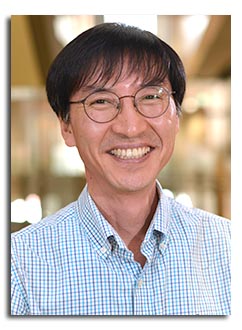
Abstract
Inorganic thin film solar cells with earth abundant Cu2ZnSn(S,Se)4 (CZTSSe) absorber materials have been fabricated using stacked Cu/Sn/Zn metallic precursors prepared by sputtering method on Mo coated sodalime glass substrates. The precursors were sulfo-selenized in a graphite box containing S and Se powder using a rapid thermal annealing furnace without using a toxic H2Se and H2S atmosphere. A 30~60 nm CdS buffer layer, a 100 nm intrinsic ZnO, a 400 nm Al doped ZnO, and Al/Ni top metal contact were deposited to fabricate thin film solar cells after sulfo-selenization process. The effects of processing parameters, such as, annealing temperature, duration time, and the amount of each metal layer in precursors, on composition ratio, interface quality, grain size, microstructure, electrical properties, cell efficiencies have been widely studied. The fabricated Cu2ZnSn(S,Se)4 thin film solar cell shows the best conversion efficiency of 11.80% with Voc : 484.6 mV, Jsc : 37.50 mA/cm2, FF: 64.91%, and active area : 0.3 cm2. This is the second highest cell efficiency among CZTSSe thin film solar cells prepared using sputtering process. It has been found that the Voc deficit is the most critical issue in improving cell efficiency. Strategies to improve cell efficiency mainly focused on minimizing Voc deficit in CZTSSe thin film solar cell systems will be discussed in detail.
Click here to see all available video seminars.
Click here to go to the SPREE HOMEPAGE.
Brief Bio
My research interest includes the fabrication and characterization of compound thin film solar cells, especially Cu2ZnSn(S,Se)4 thin films, using various methods, such as sputtering, electro-deposition, sol-gel, nano-particles. He is also trying to study on the synthesis of metal-chalcogenide and metal-oxide thin films by physical, chemical, electrochemical methods and their applications in transparent conducting oxides, gas sensors, energy storage devices, etc.
- Fabrication and Characterization of CIGS and CZTS thin film solar cells
- Growth and Characterization of wide bandgap TCO materials
- Formation of Nano-crystals of ZnO, CZT, CZTS using solution method for Energy application
- Photoelectrochemical water-splitting cells based on chalcogenide and oxdie quantum dots and nanor-rods
- Material characterization using TEM (expecially high-resoluton TEM)
